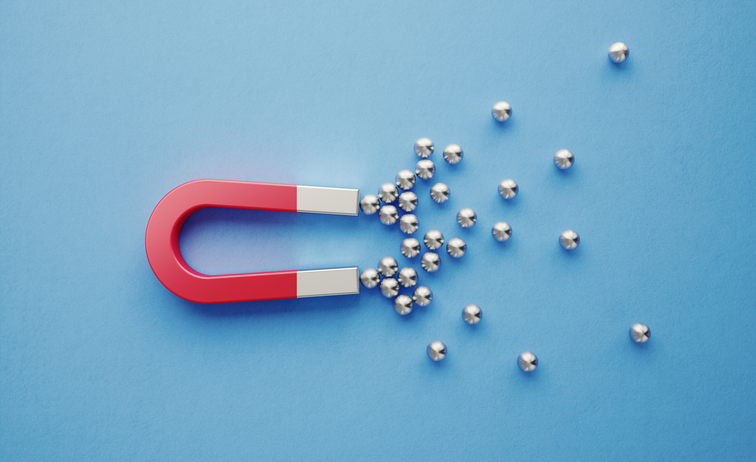Magnetic Activated Cell Sorting: Principle of MACS Cell Sorting
The ability to isolate cell populations from heterogenous mixtures is a key part of life sciences research. One approach to separating cells is magnetic-activated cell sorting (MACS), which uses magnets to isolate targeted cells from the rest of a biological sample.

Magnetic cell separation is a popular technology; however, like any method of sorting cells, it has its shortcomings. But MACS needs to look out, because there is a new player on the field—buoyancy-activated microbubbles—that is changing the game.
How Magnetic-Activated Cell Sorting Works
MACS, also known as immunomagnetic cell separation, binds magnetic particles to cells through an antibody interaction with surface markers of the targeted cells. Then, those targeted cells are magnetically isolated from the rest of the biological sample.
Let’s break down cell separation using magnetic beads:
- Magnetic beads coated with antibodies, lectins, or enzymes that are associated with surface markers or antigens of the targeted cell group are added to a biological sample.
- Cells with those surface markers are labeled by the magnetic beads.
- The solution is transferred to a column, and a magnetic field is applied.
- Targeted cells—those attached to the magnetic beads—are magnetized to the walls of the column while non-targeted cells flow through the column.
- The magnetic field is turned off, and the bead-carrying cells are released for recovery.
Magnetic cell sorting can take a positive or negative selection approach, depending on whether the desired cells remain attached to the walls of the column or flow through the column while unwanted cells are left behind.
Magnetic Cell Sorting: Advantages and Disadvantages
There are several advantages to MACS, which is why it’s one of the most common cell separation technologies used today. To start, when compared to other traditional cell isolation technologies, it’s relatively inexpensive and fast. Magnetic cell sorting can be scaled up or down depending on need, and it may also be combined with other methods (like FACS) to improve the purity of isolated cells.
MACS is highly versatile and widely used; what’s not to like?
Well, a few things.
MACS is often time-consuming and laborious. And, of course, the hidden costs can be significant: Separation magnets, magnetic beads, and column replacements can all add up—and that’s not even considering the cost of storing these materials.
On top of equipment costs, MACS requires researchers to use separate columns and magnets for each experiment. Multiple samples at the same time? Not going to happen.
The most significant disadvantage, though, is the effect magnetic fields have on some cell populations. For delicate cells, magnetic beads can cause damage.
Akadeum Microbubbles vs. Magnetic Cell Separation: A Clear Winner
Choosing a cell separation approach is a key part of the research process. If you are looking for an efficient and cost-effective way to isolate cell populations, look no further than Akadeum microbubbles.
Akadeum’s buoyancy-activated cell sorting (BACS™) microbubbles are a new alternative to traditional cell isolation methods like MACS. Our microbubbles capture target cells and quickly float them to the surface of a biological sample for removal—all while improving the quality and viability of sorted cells.
With Akadeum microbubble products, you don’t have to purchase expensive magnets or columns, so the cost savings are clear. As an added bonus, your cell sample won’t undergo any harsh magnetic forces. Our cell separation approach is gentle, which is perfect for samples that require sensitivity.
Everything happens within the same tube, so your workflow is simplified. You’ll save time, too, since the whole process takes about 30 minutes (!) from start to finish. And while MACS requires additional magnets for each sample, microbubbles let you run multiple samples at the same time.
Try Our Cell Sorting Microbubbles Today
Are you ready to isolate cells to a high level of purity with a gentle and rapid cell sorting technology that requires no additional equipment? Check out our BACS™ microbubble products.



